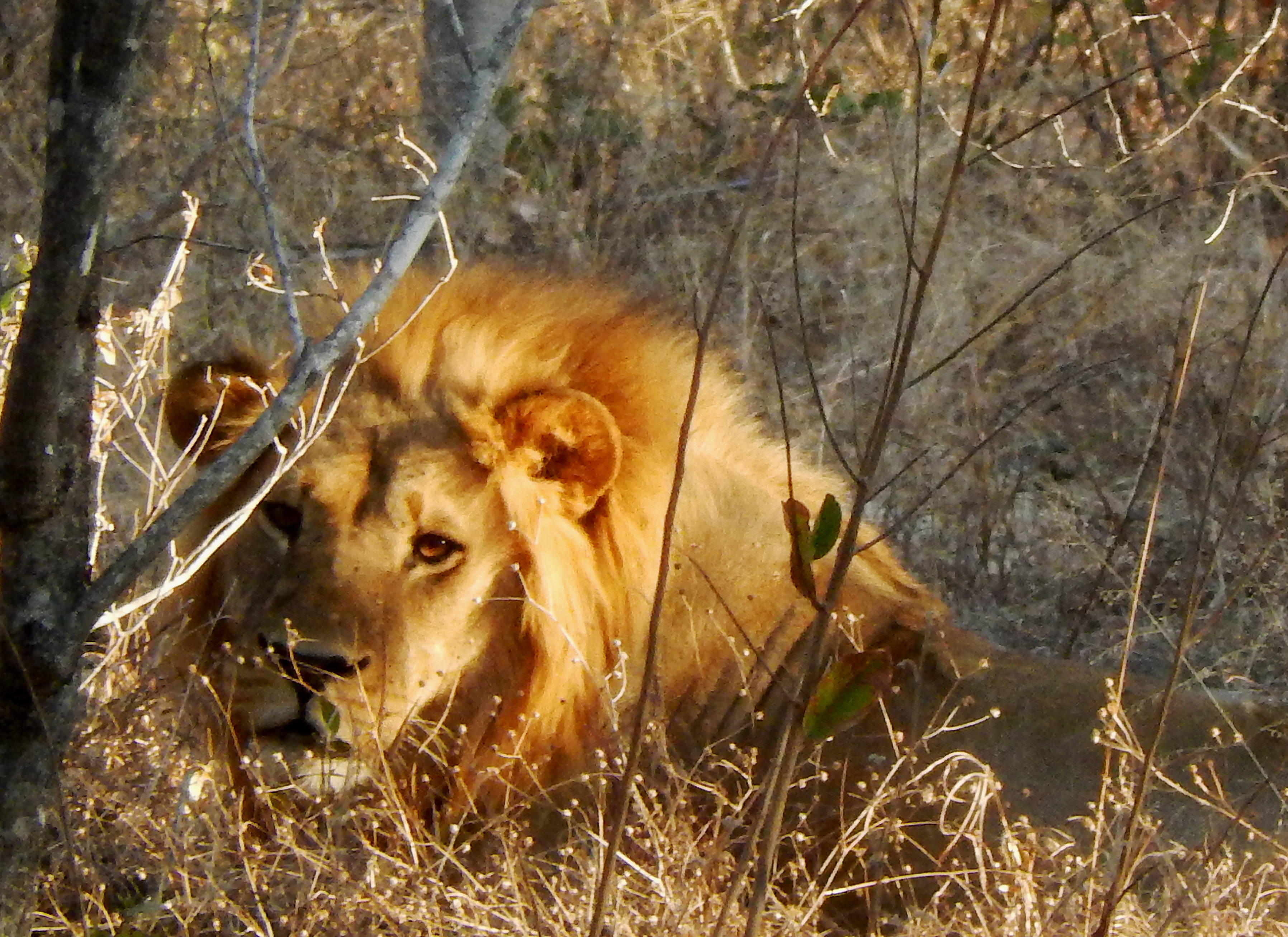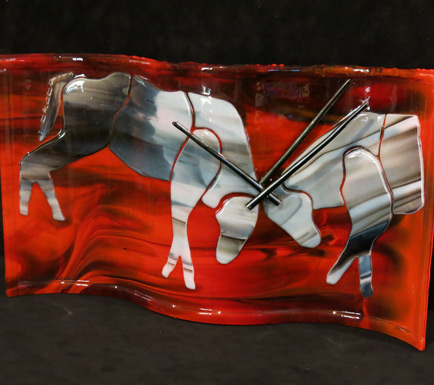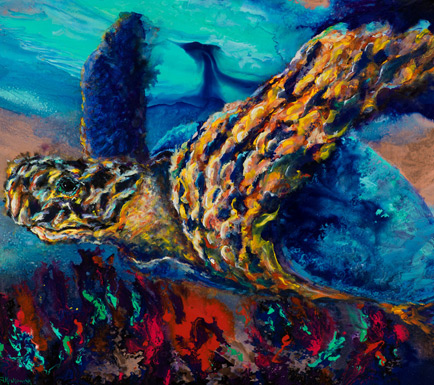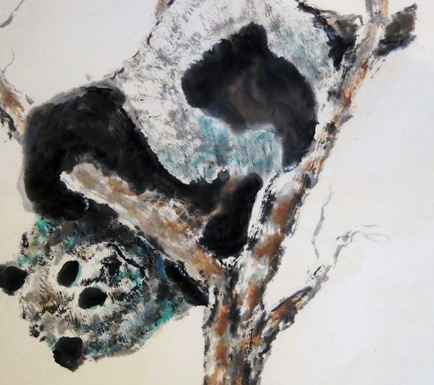The Making of the Cecil the Lion Bronze
The Making of the Cecil the Lion Bronze
The making of Cecil the Lion was an emotional journey full of respect for this amazing lion.
Click the arrows to move through the slideshow.
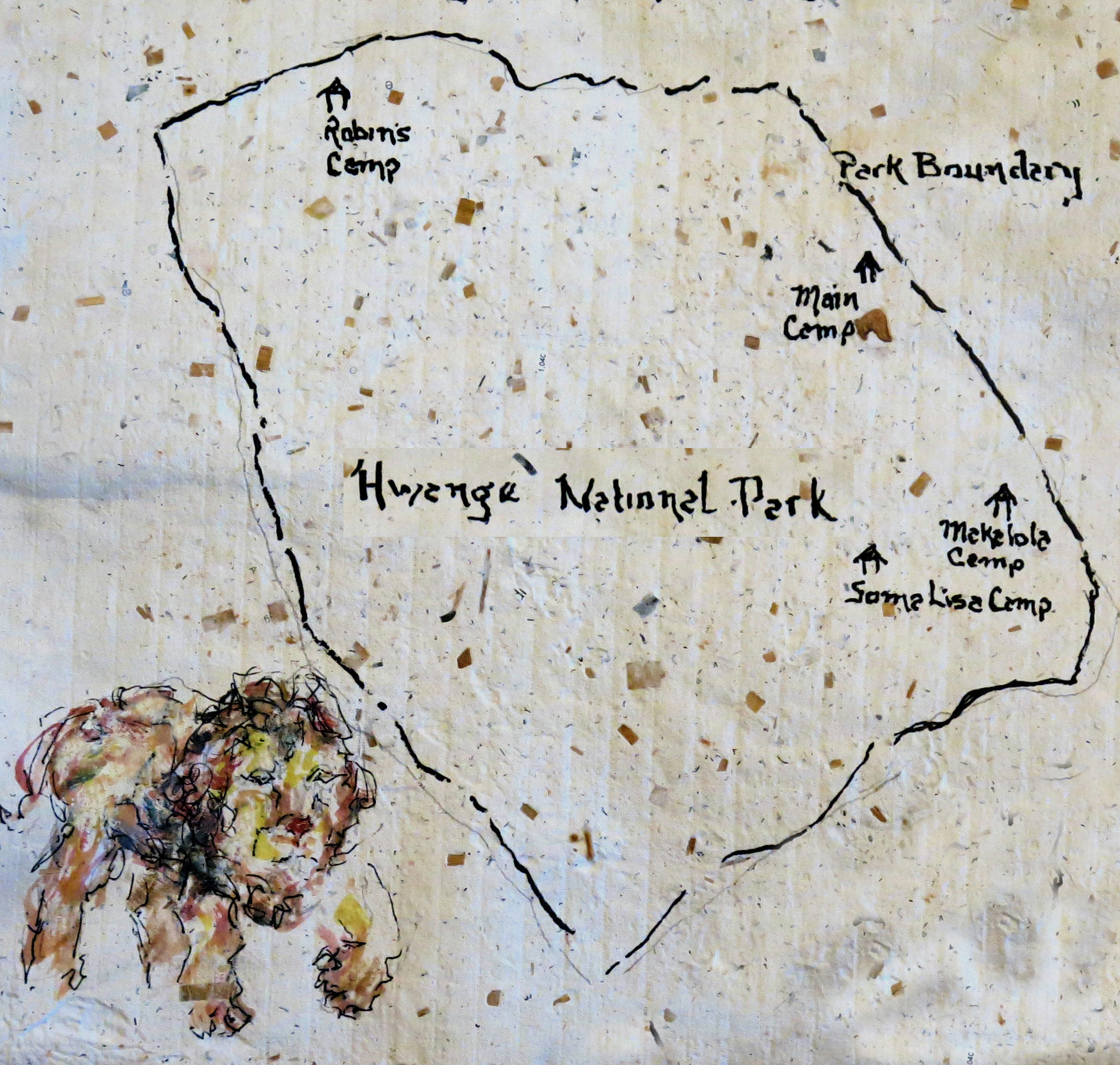
2
In July of 2015 I arrived at the Main camp of Hwange National Park in Matabeleland North, Zimbabwe, Africa where there are no fences enclosing the park grounds and wildlife roam freely. This would be my fifth visit to a favorite camp of mine named SomaLisa a territory controlled by two magnificent male lions Cecil and Jericho.
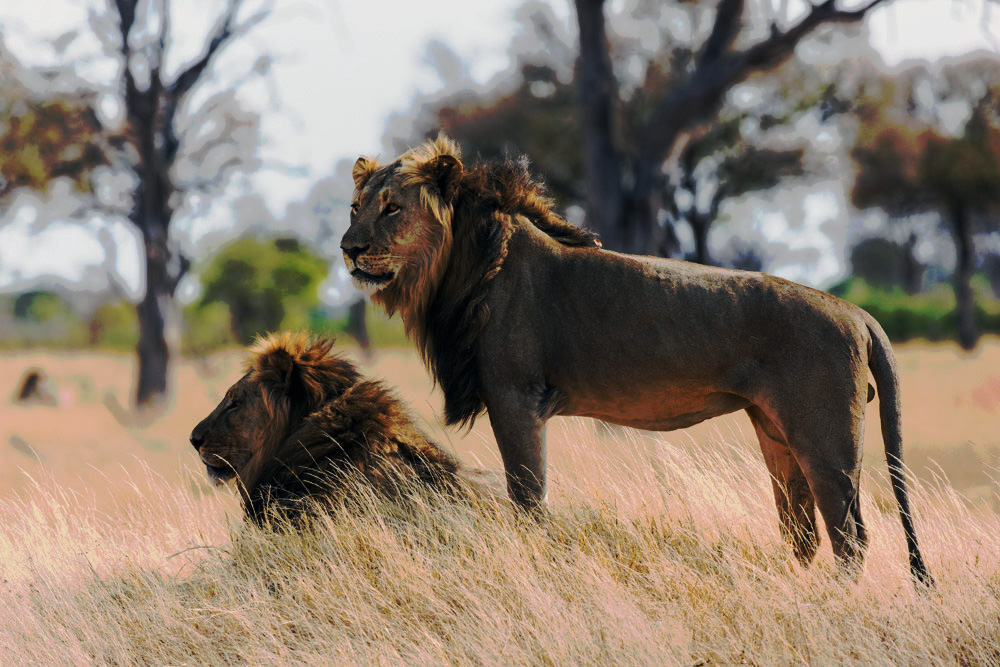
3
In 2009 Cecil and his brother engaged in a territorial fight where Cecil’s brother was mortally wounded and Cecil retreated due to the wounds inflicted on him by the rival male. Subsequently, Cecil teamed up with Jericho to reestablish themselves in the forfeited territory and live in the safety and protection of the Hwange National Park with their females and cubs.
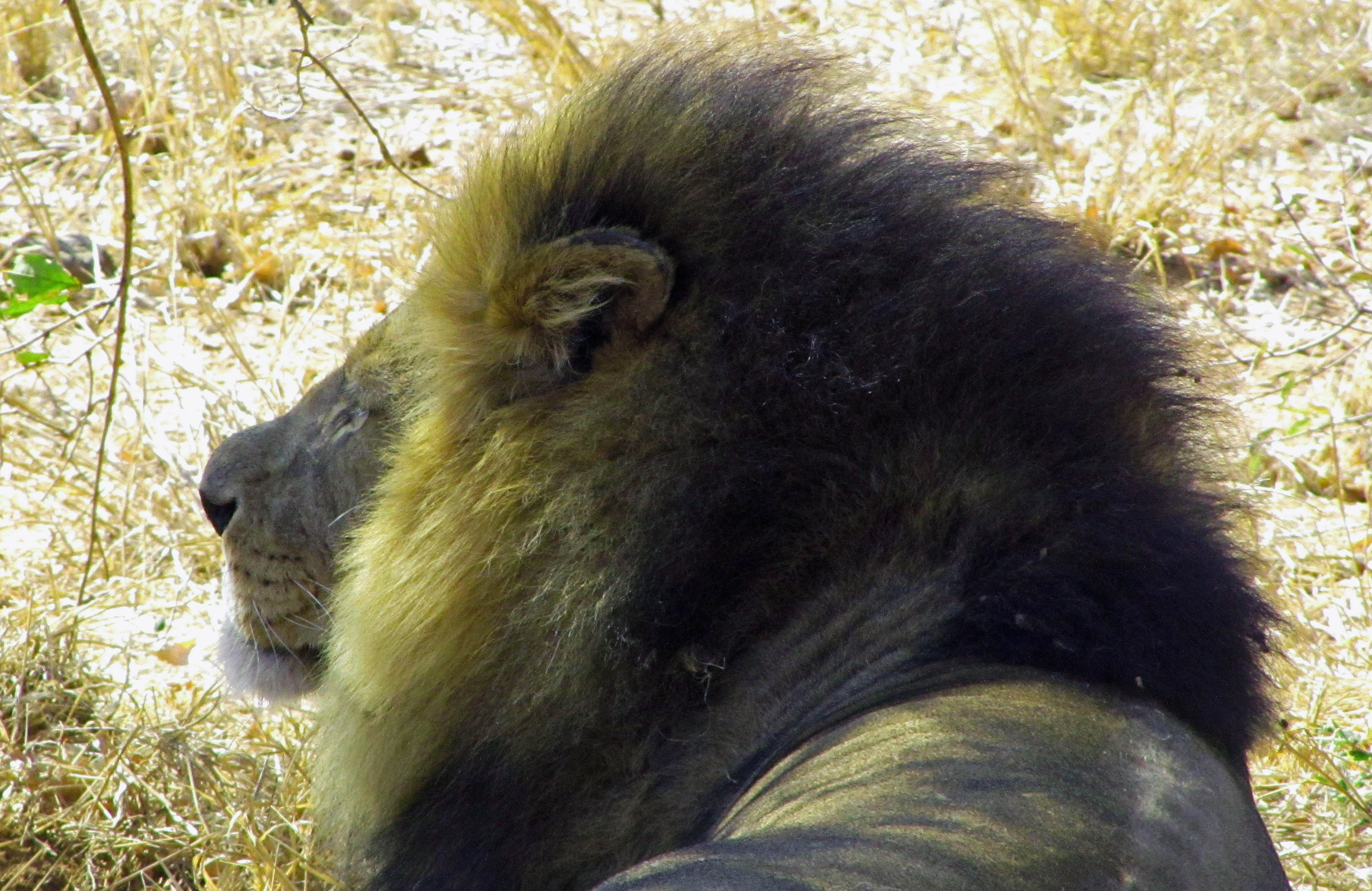
4
Cecil was a spectacular and elegant male with a full burnt umber mane touched with lemon and orange tinted higlhlights that glistened in the sunlight.
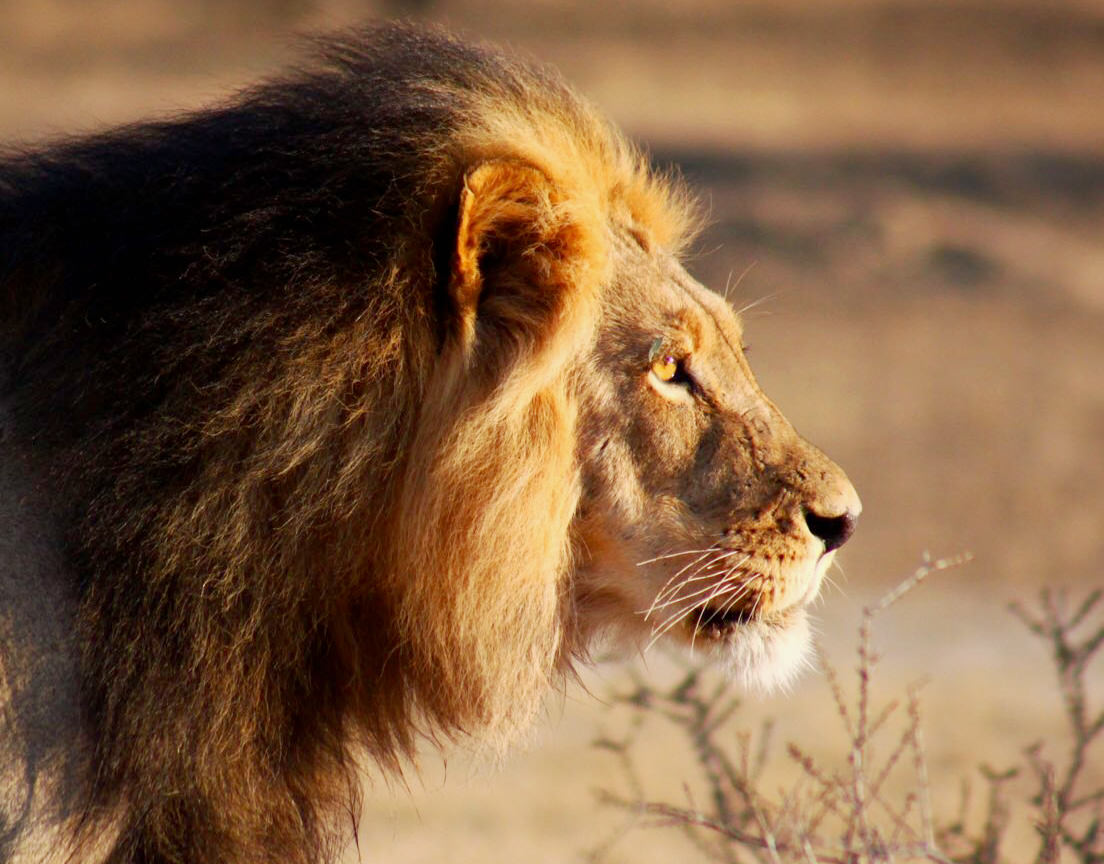
5
When I arrived at SomaLisa Camp I was informed of the demise of Cecil due to a conspiracy of greed and subversionary tactics between a hunter and a Zimbabwe guide.
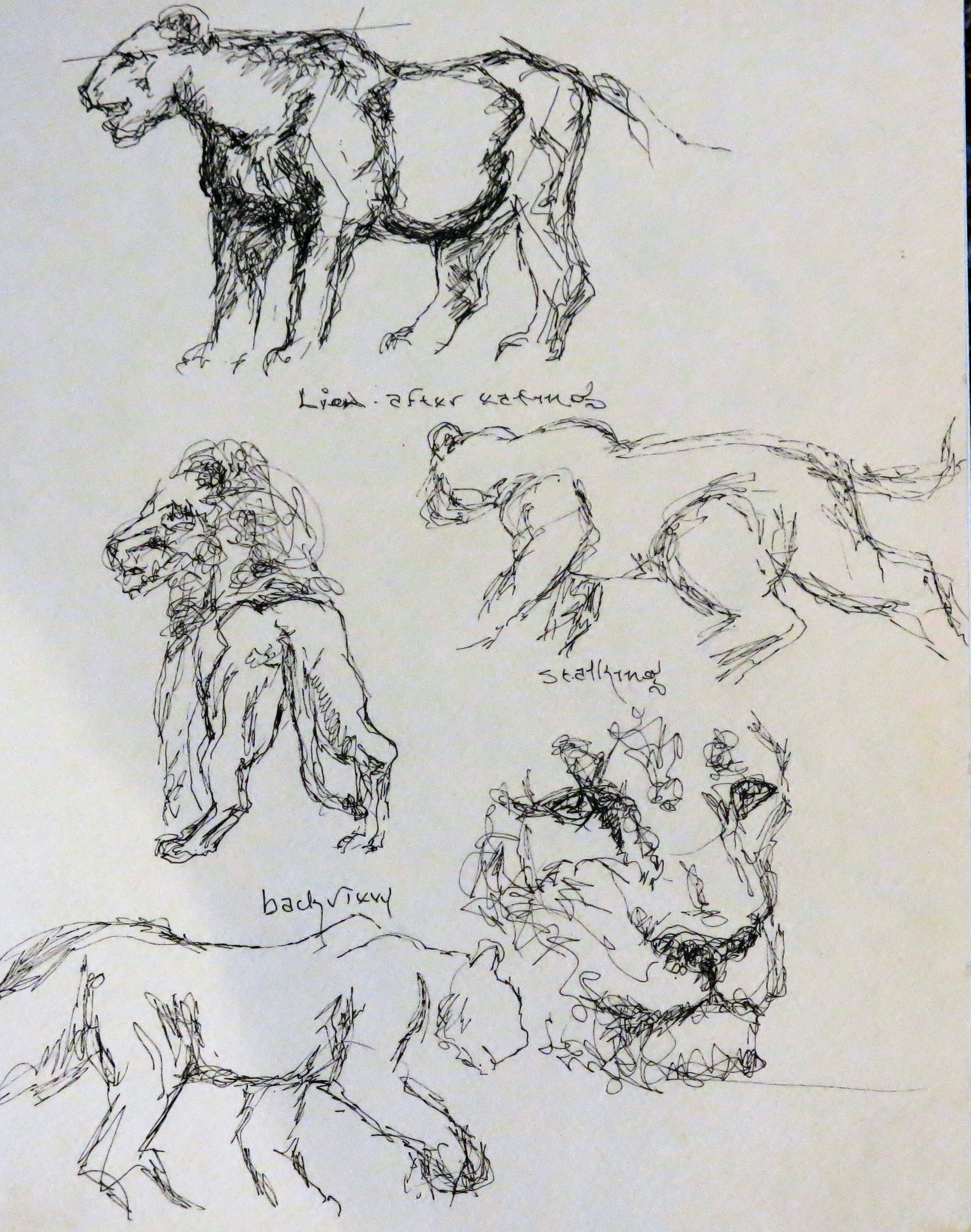
6
Returning home after two months on safari I was on a mission to complete a bronze honoring Cecil . The sheer tragedy of Cecil’s death was an emotional trigger for me that inspired my passion to start the project with a vengeance. My sketch pad and notes of Cecil stimulated my memory of him and refreshed my senses to the sounds and smells and all the flavor of Africa.
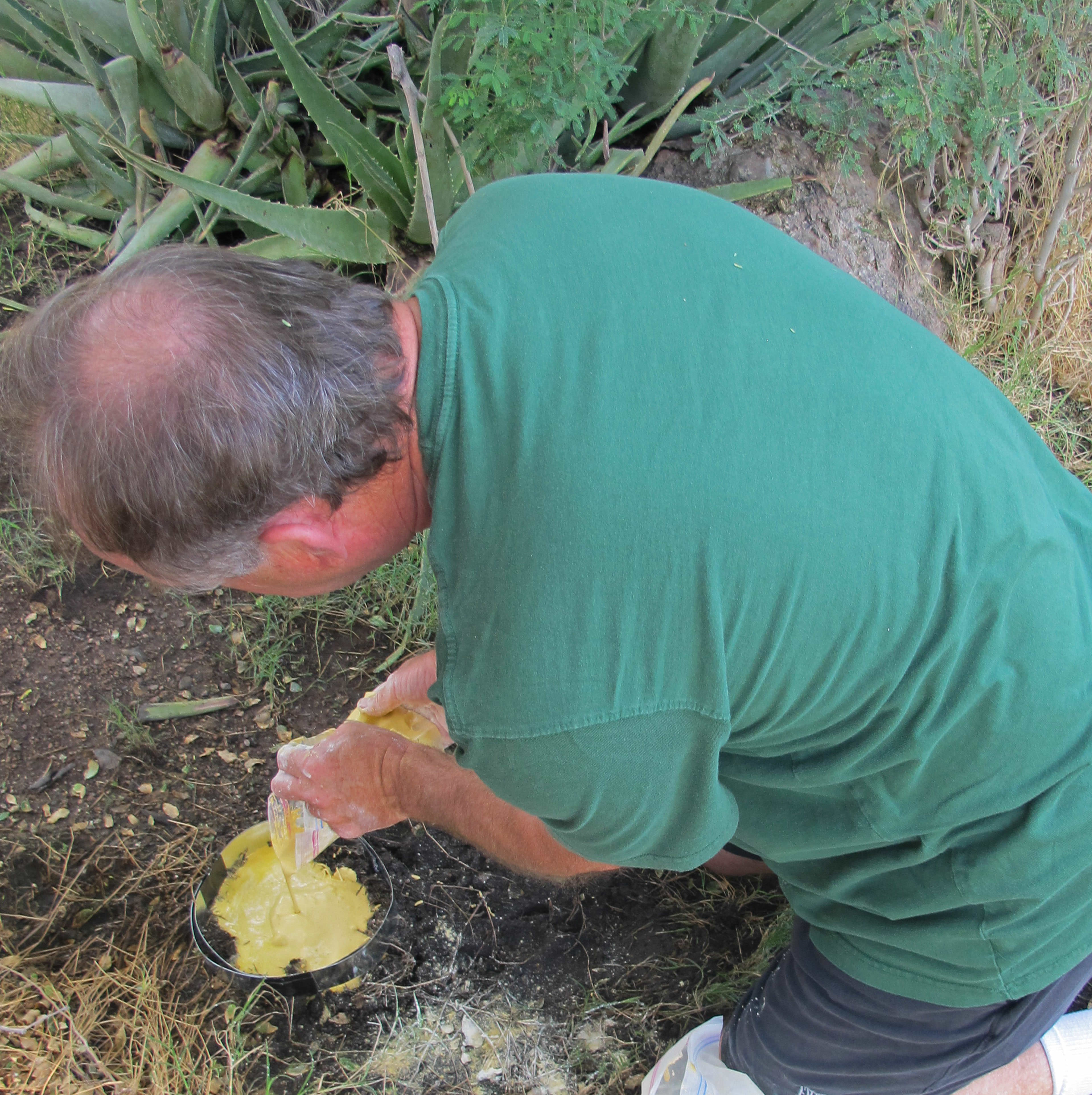
7
Photos are memories and create a powerful source of emotion and inspiration. Rummaging through my collection of SomaLisa photos to begin my sculpture of Cecil I came across several pictures of myself casting Cecil’s paw print after tracking him and his brother Jericho last year.
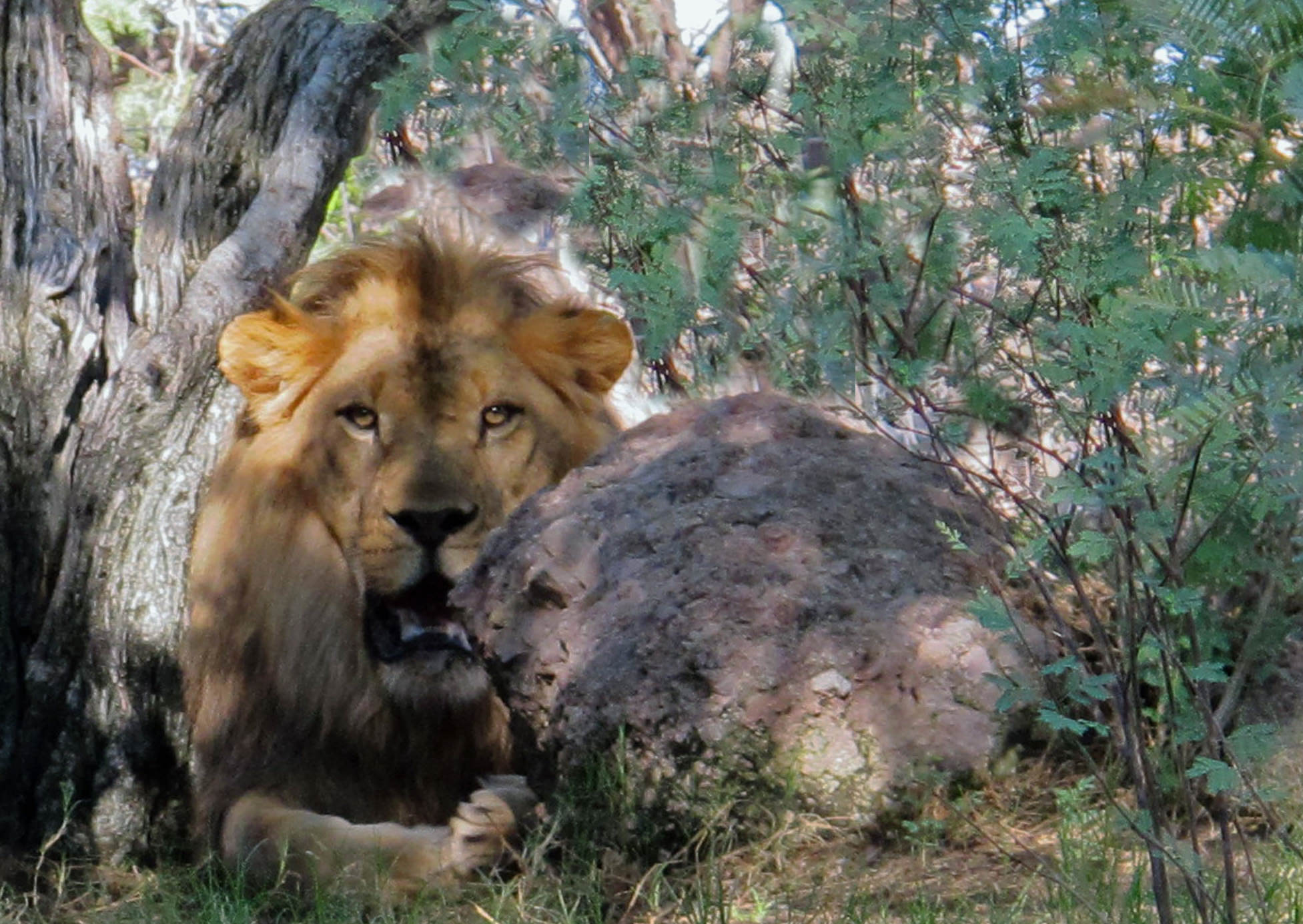
8
Looking through these casting photos brought back the unparalleled level of conscious awareness I had that day we were tracking. Checking the stride and the sand particles around the paw prints to see if the Cecil was running or walking. Tasting the acidity smell of his urine on a nearby bush. Feeling the earth underneath my fingernails. Remembering we found an imprint in the sand where he had laid. These photo memories aroused my emotions and senses of Cecil
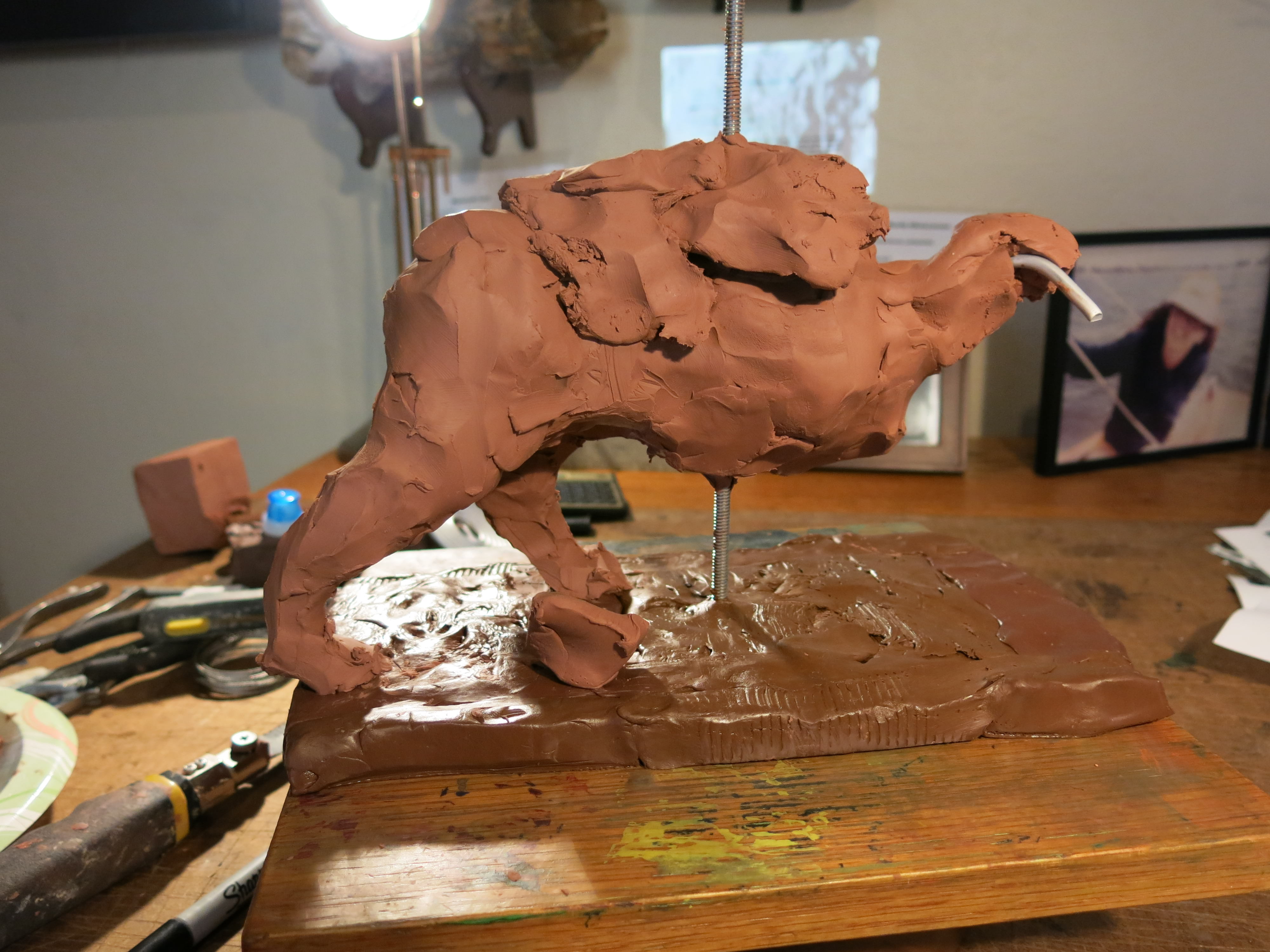
9
First step, sculptures require an armature. A steel rod is drilled into the wood working surface and then aluminum armature wire is cut and tied to the center rod to support the legs and neck of the lion. Off of my sketches of Cecil in Hwange Park I start building the body laying clay on the armature in the general shape without concern for muscle detail.
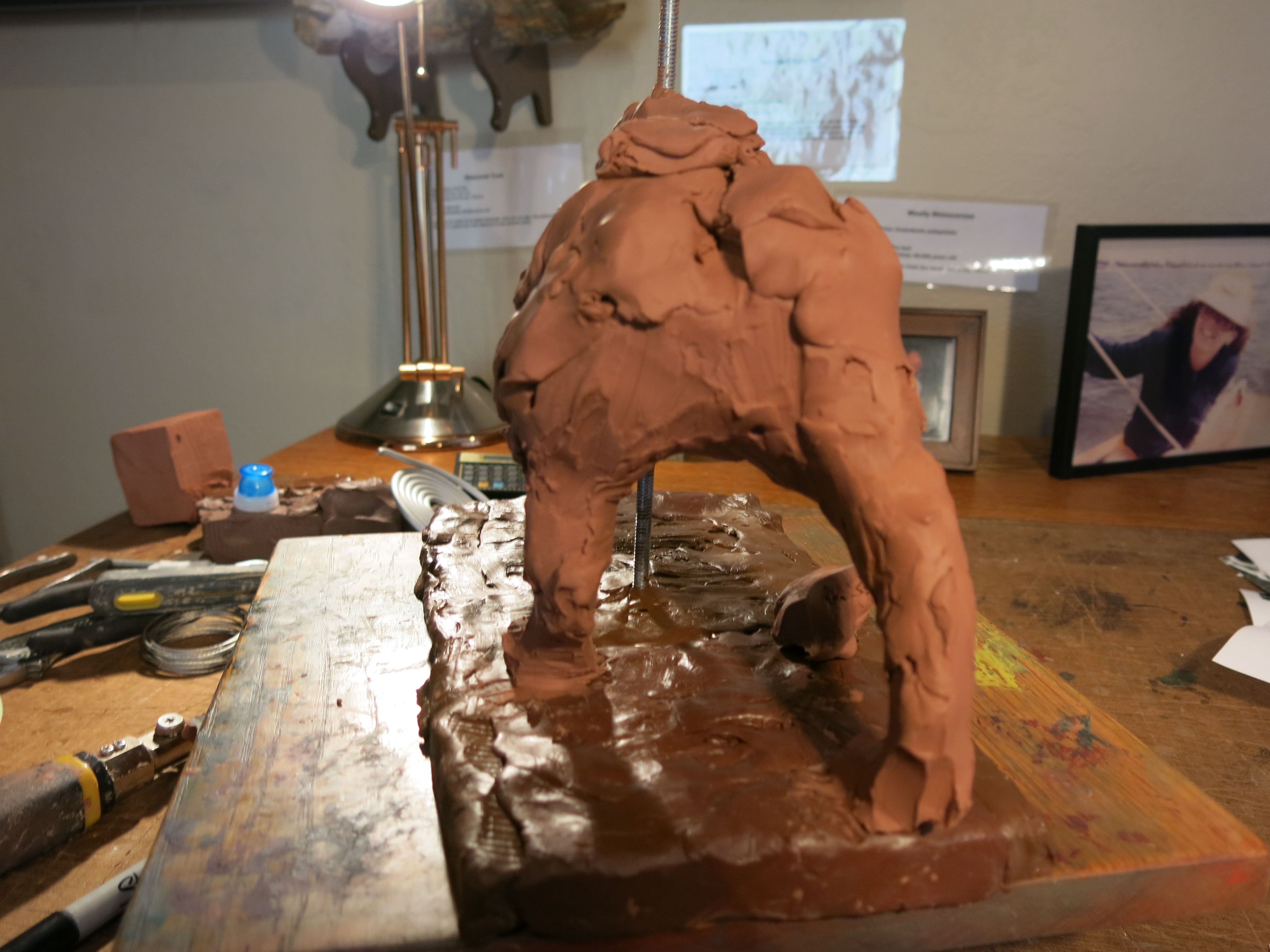
10
As I continue to build up the clay on the armature I am working off not only the sketch but also in large part from my memory of Cecil and the unique and awesome gesture of him in his stride.

11
Lions possess a ponderous frame so once the overall body and posture is in place I must concern myself with proportion and observe the bone and muscle structure is proper from every angle including looking from above.
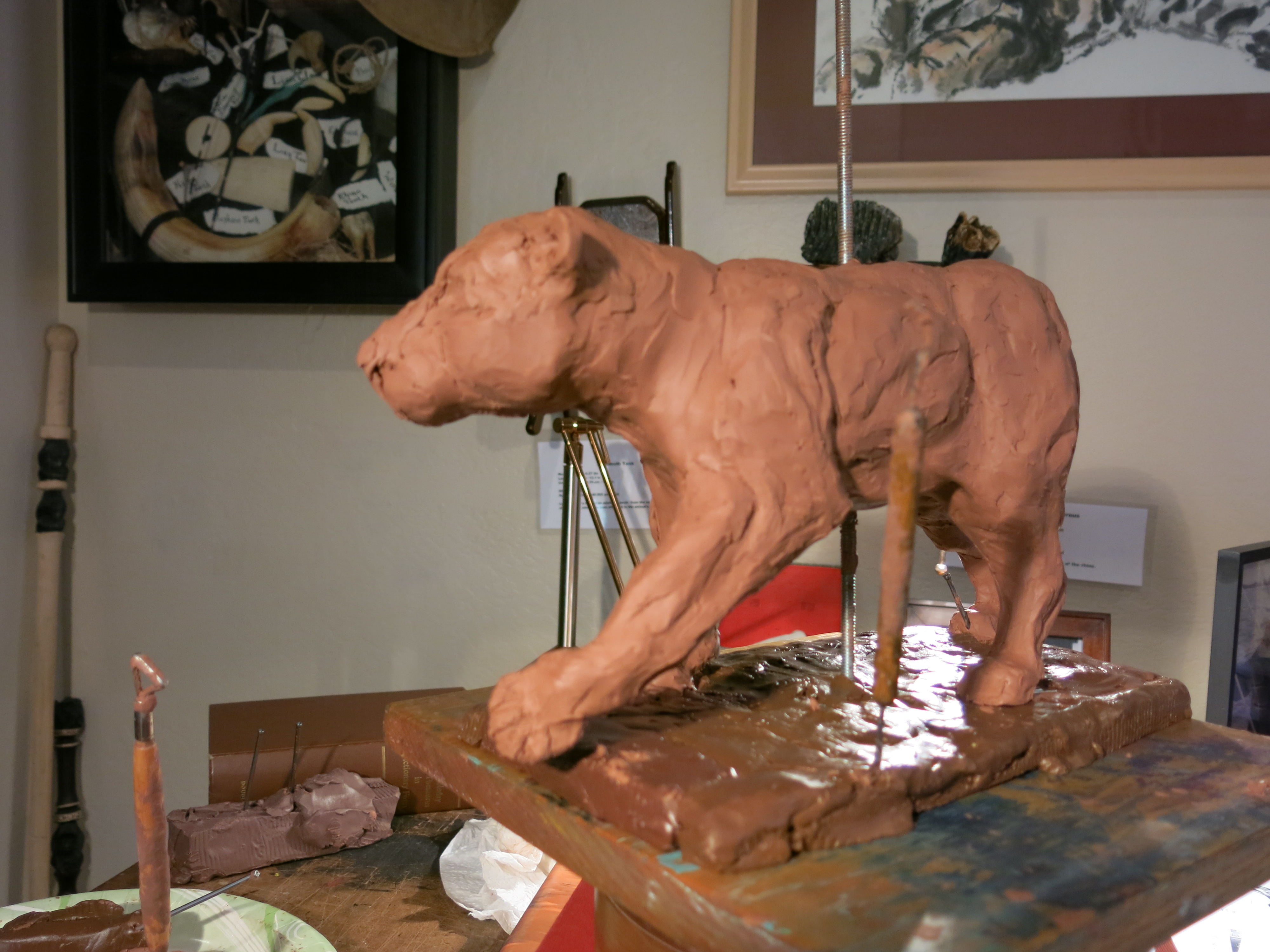
12
Attention must be paid to how a lion places his weight when he walks and the position of his feet . The left front foot is on its way forward for a step and as it comes off the ground it angles a bit inward at the wrist. The lion makes this movement to protect the sheathed claws and tender toes. This action allows the lion to take a more narrow path through the underbrush.
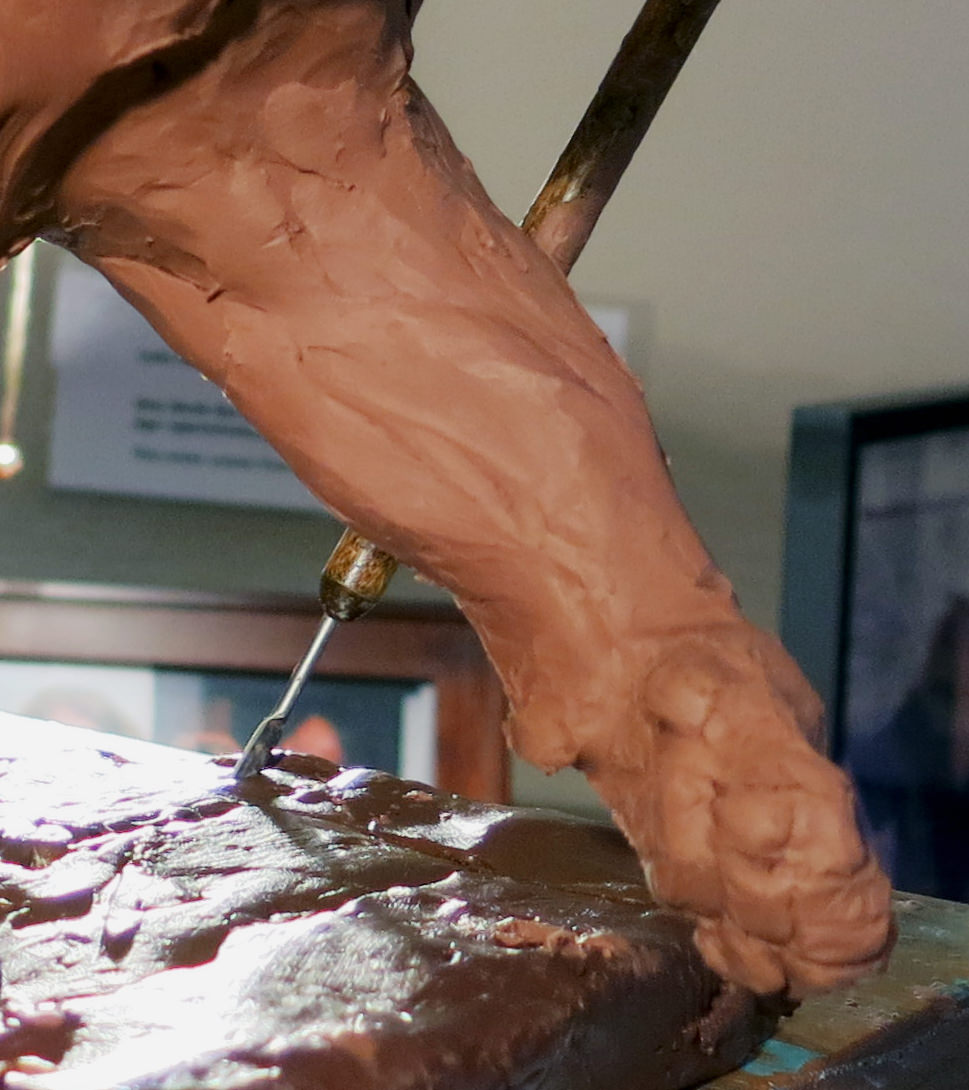
13
With lions and nearly all wildlife there is a bone influence and muscle influence in their front legs which results in a prominent structure from the inside of their wrist up the leg. It is important to record this structure with the right leg and left leg as the left foot here is ready to be softly placed on the ground.
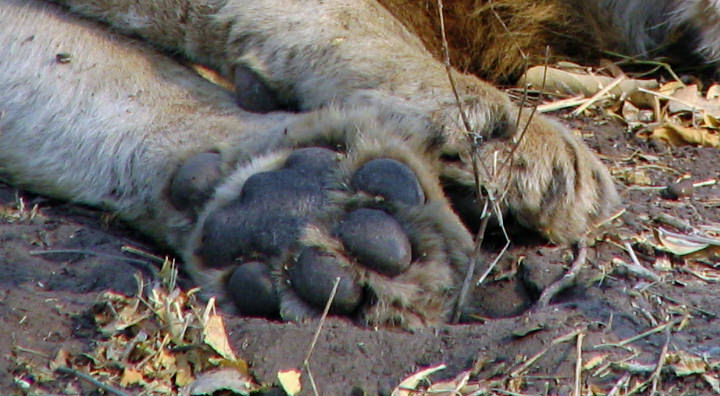
14
Claws in lions have a tendency to slant in when extended and are generally retracted while walking leaving only a trace in the soil.
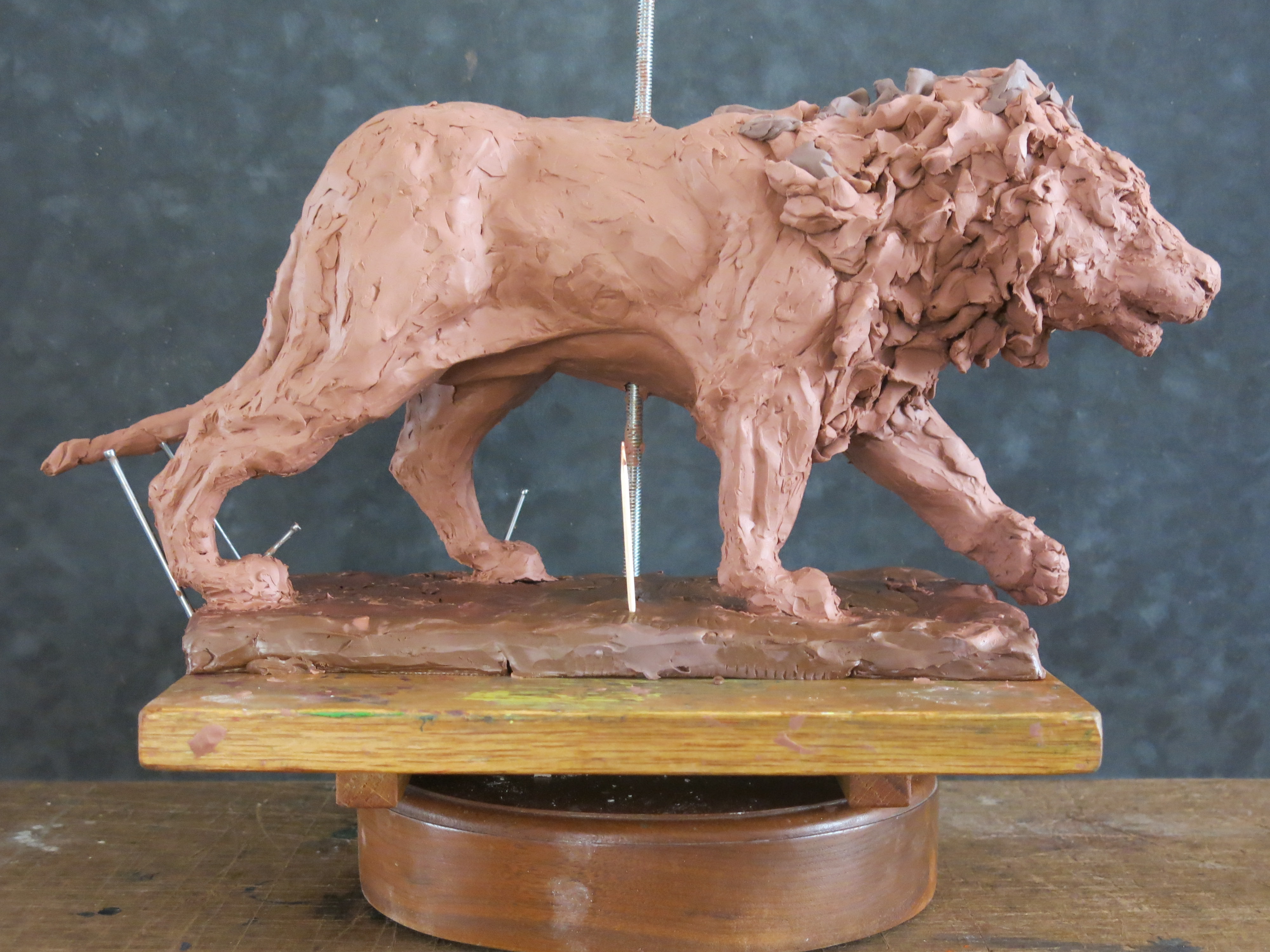
15
The dignity of a male lion is often exhibited in his stride. Cecil walked with extreme dignity pushing forward the upper arm in his stride. His walk was effortless and no doubt one reason he moved so graceful through his territory.
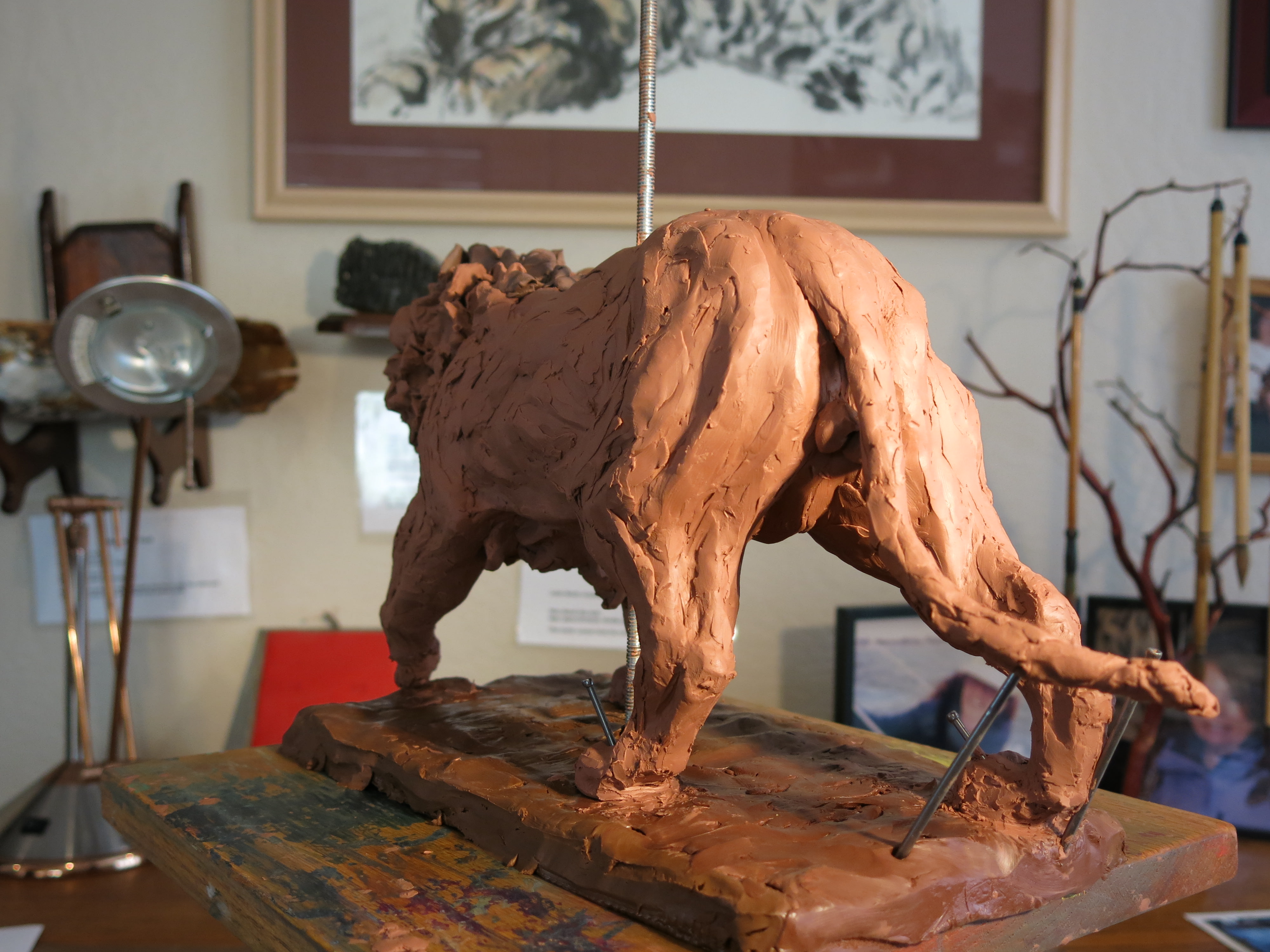
16
My knowledge of Cecil’s anatomy is paramount for this bronze success. The lion has a trapezoid like pelvis and it does not move with the unison similar to the shoulder region. The bicep femoris muscle and tendons of the hind legs should be anatomically correct.
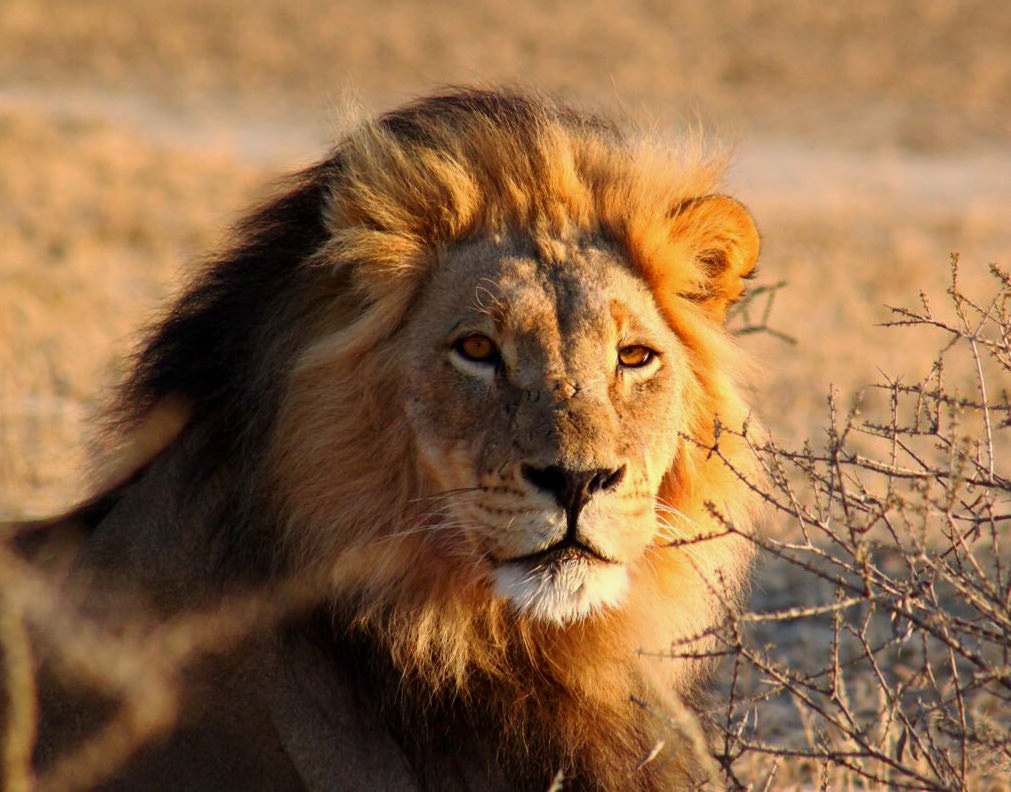
17
Cecil was a lion of nobility an icon. He had a fairly wide face and I needed to pay attention to his eyes because the outside characteristics of a lions face strengthen their night vision. Cecil’s distinctive round pupils tucked under his stately brow and white strips under those eyes helped him reflect faint light into the pupils, maximizing the amount of light entering the eye aiding his night vision.
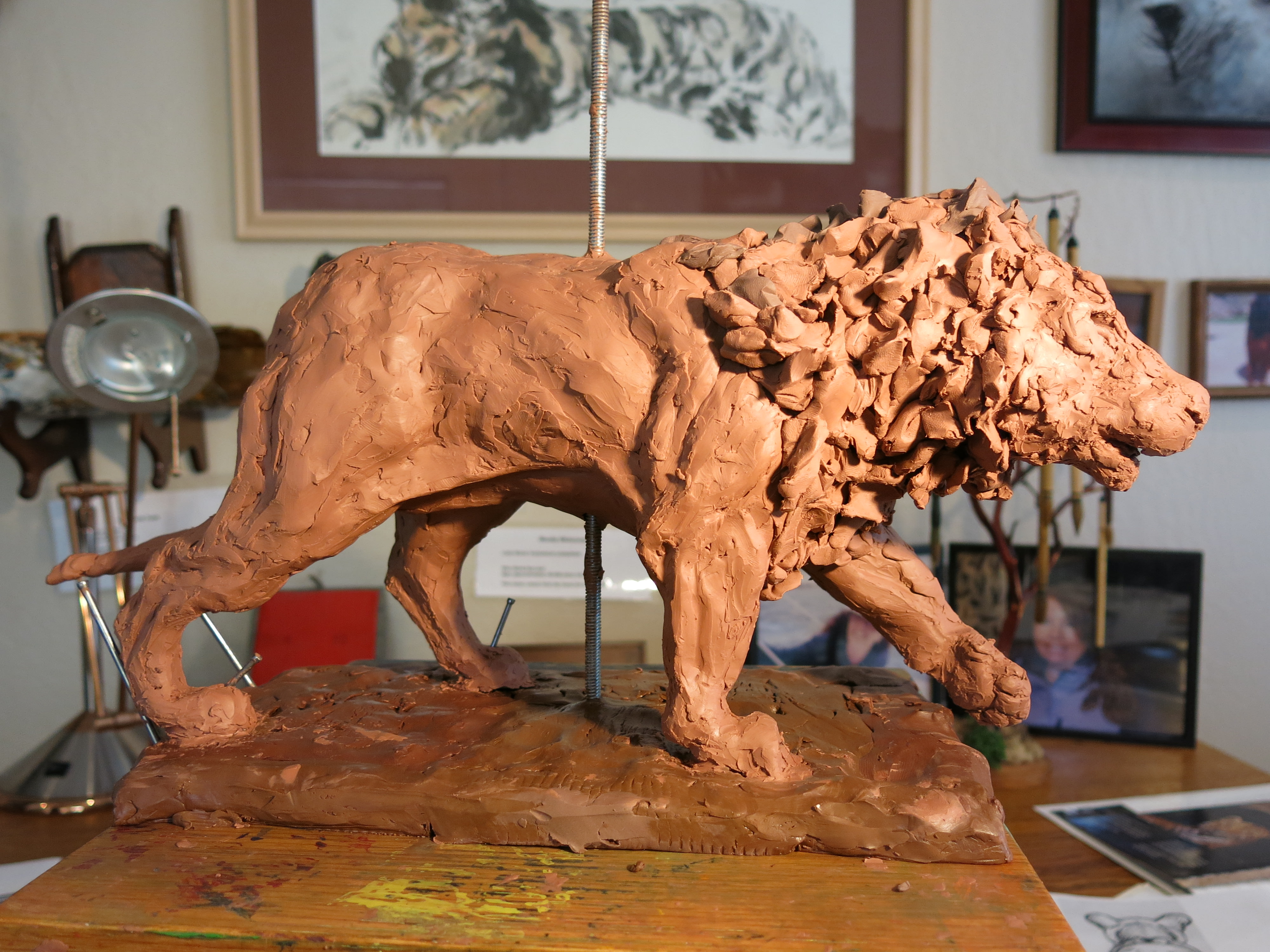
18
In addition to his face, it was imperative I focus on his full dark mane which enhanced his appearance and decorated his neck and shoulders.
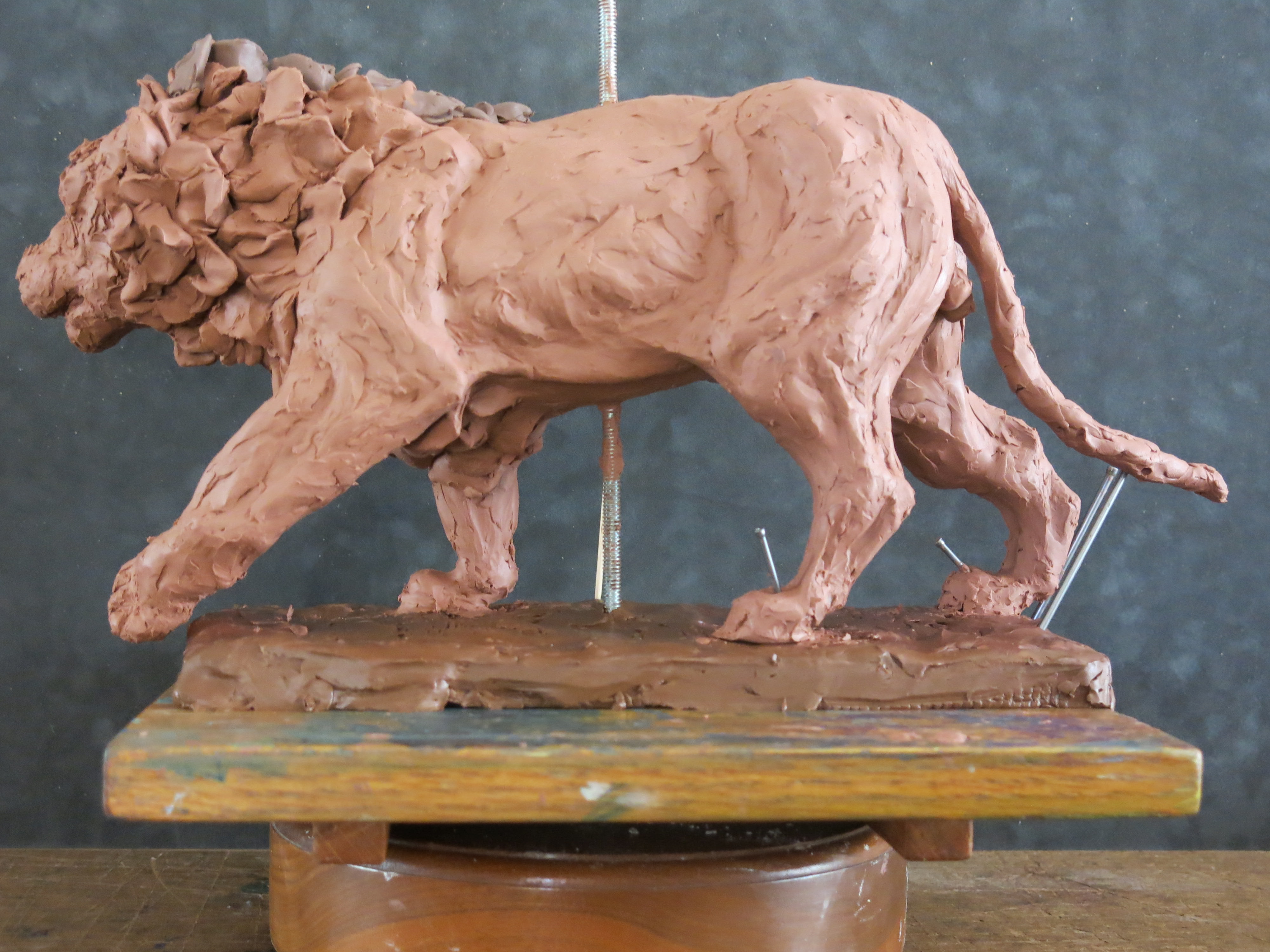
19
I wanted my sculpture of Cecil to be visceral and release the same spark of life that Cecil exhibited and shared with everyone. I did not want to mold every minute detail but instead produce a work of art where every viewer can participate.

20
At the foundry the clay sculpture is coated with a rubber compound that sets up to create a negative mold. Molten wax is then poured into the negative mold evenly coating the interior walls. The wax is removed and then inspected and any imperfections are then corrected.

21
The wax replica is sprued and gated. A ceramic shell is applied which is then placed into a kiln at 1500 degrees which causes the shell to harden.
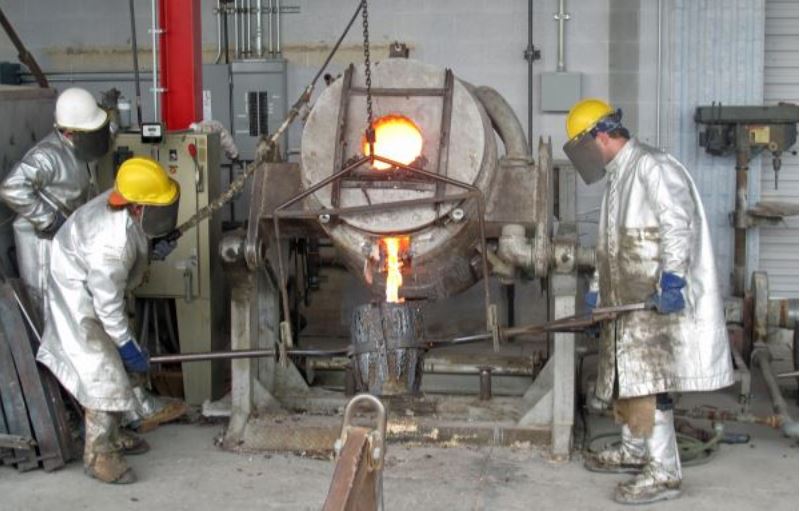
22
Molten bronze is heated to 2200 degrees Fahrenheit simultaneously with the cup from which the bronze will be poured.
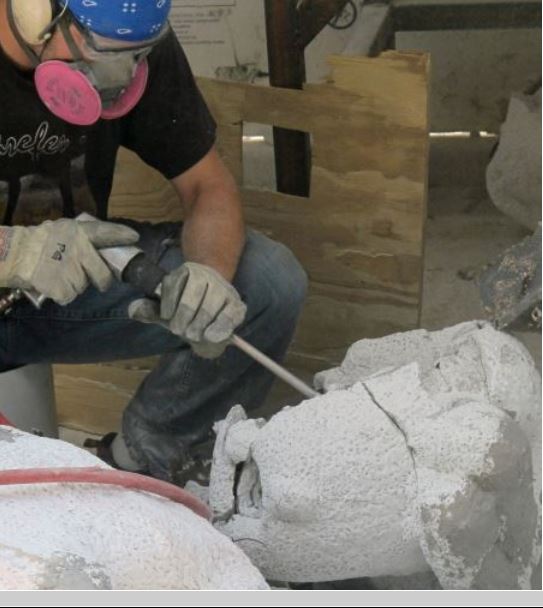

24
After the ceramic shells are broken off the next step is a metal check to correct any minor mistakes before applying the patina or coloring.
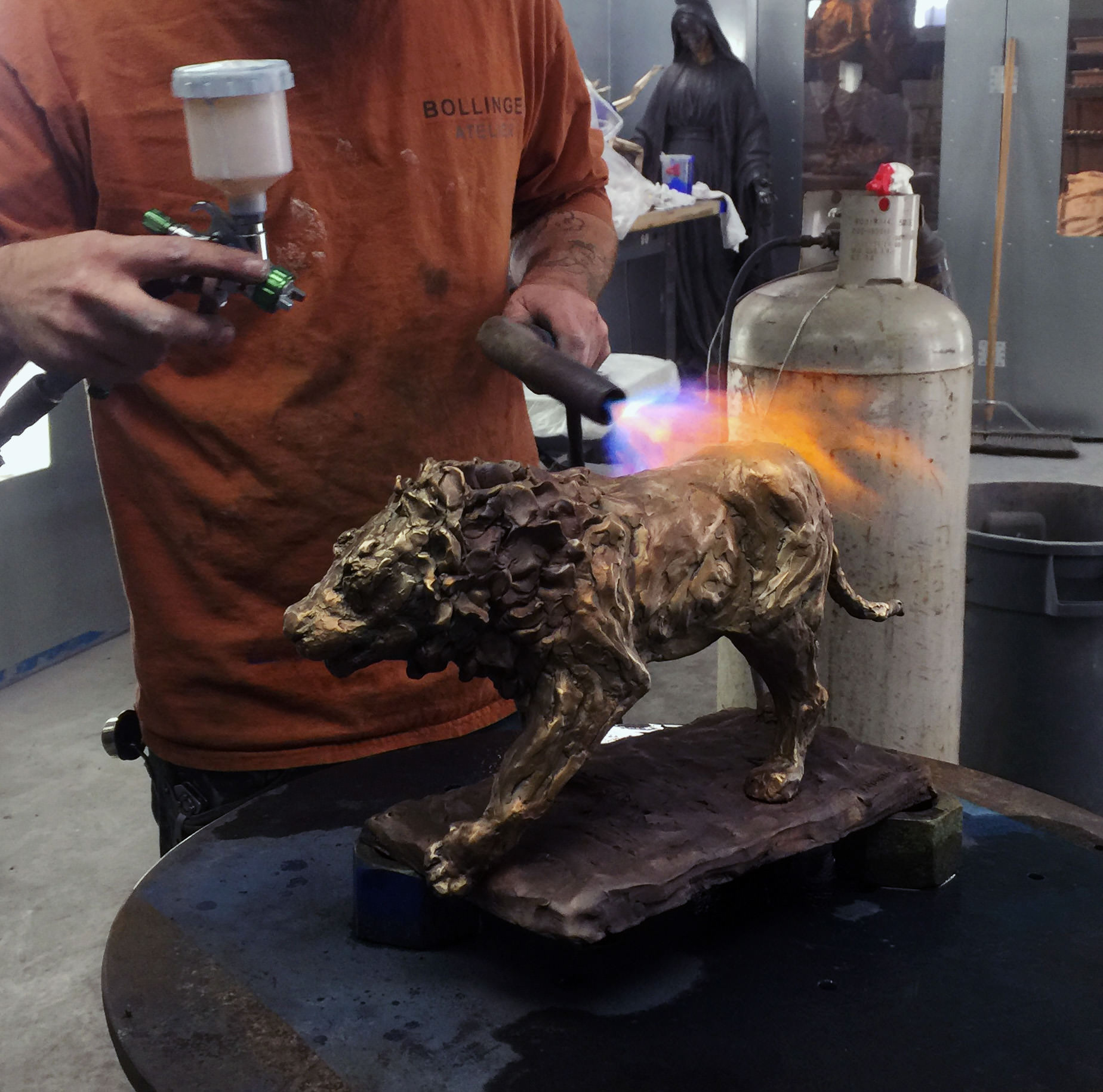
25
Heat is applied to the bronze and then the patina is brushed on a number of various ways depending on the desired effect.
The ancient Asians would bury their bronzes for years to oxidize them. Today we can color the bronze in hours. The coloring is termed patina.
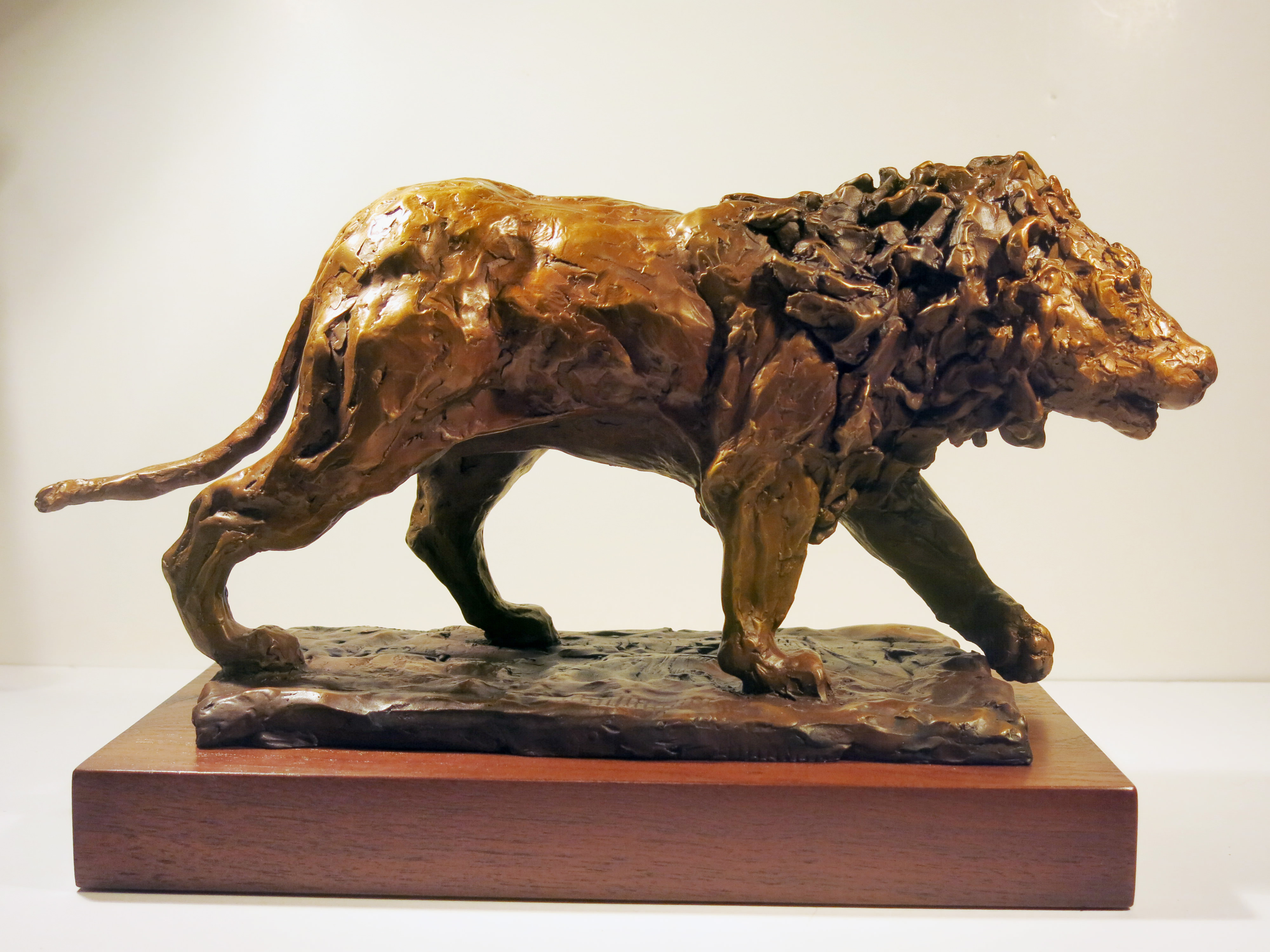
25
Let this Cecil bronze be a symbol of sustainability and conservation responsibility.

